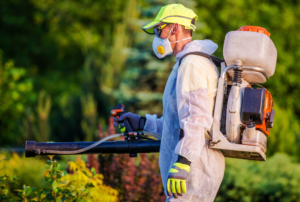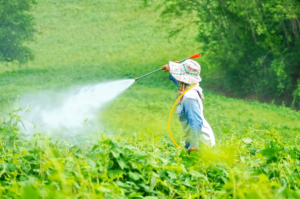Rats can destroy your home, cause fires, contaminate food, and spread diseases such as leptospirosis. To avoid rat infestations, you should keep trash cans closed, trim tree limbs, and clean your yard.
Roof Rat Removal Service Texas uses humane removal techniques and offers a lifetime guarantee on all work. They conduct an initial inspection and analyze rat behavior to determine the extent of the infestation.

Rats are not just a nuisance; they pose a health risk to humans and their families. They also contaminate food and destroy property. Fortunately, professional pest control specialists are trained to deal with rats humanely, preventing them from returning.
A good pest control plan begins with thoroughly inspecting your home and yard. This will help a professional determine how the rats entered your home and where they are living. Pest professionals will then use a UV light to detect the rats’ urine, which glows in the dark. This allows a specialist to find the location of the rats, even if they are hiding in an attic or behind walls.
Once the professionals have found where the rats are living, they can take steps to eliminate them from your home and yard. The first step is to seal up any gaps or cracks that are larger than a quarter. Rats can gnaw through the smallest openings, including wires and insulation, which can lead to a house fire.
Another way to keep rats out is to limit their food sources. This includes putting all garbage in tightly sealed containers, cleaning up food crumbs, and taking out the trash regularly. You should also keep pet food, bird seed, and other outdoor food in airtight storage bins.
Lastly, you should remove all potential water sources. This means removing puddles, fixing all leaky faucets and drains, and monitoring pet water dishes. Rats can die of dehydration in as little as a day.
A professional can also set traps or bait in the areas where you see signs of a rat infestation. Baits can include peanut butter, cat food, or fruit scraps. Traps can be metal snap traps, glue traps, or a combination of both. Glue traps are especially cruel because, in their struggle to escape the trap, a rat can tear its fur and limbs off, which can cause infection. Poisons are another horrible option because, in their struggle to escape a poisoned trap, a rat can chew off its own legs.
Effective
Roof rats are notoriously difficult to eradicate and can cause significant damage to a home. They are able to gnaw through wires, insulation, and other materials, compromising the safety of occupants and leading to fire hazards. They also spread zoonotic diseases like the bubonic plague, salmonella, and hantavirus, which can be harmful to humans if inhaled or ingested. Because of this, homeowners who suspect a problem should seek professional help immediately. A pest control expert can use a variety of trapping methods to quickly and effectively remove the rodents from a property. Baited traps are one of the most popular, as they kill rodents instantly. Other options include glue traps, which require more patience but still provide a quick death, and electronic traps, which kill rodents with an electric shock.
In addition to baiting and trapping, an experienced pest control professional will also take steps to prevent future infestations. This may involve repairing structural vulnerabilities and removing potential food and water sources. For instance, a home can be made less inviting to rats by sealing any cracks or gaps that are bigger than a quarter inch. It is also helpful to regularly inspect the landscape and remove any debris that could act as hiding or nesting places for rats.
While traditional rodent control measures can be effective in reducing the number of rats in an area, they cannot address the conditions that attract them to a property. This is why a holistic approach to pest control is important. By combining a range of techniques, including habitat modification and exclusion techniques, homeowners can create living spaces that are less hospitable to rats.
Roof rat populations often build up in attics, where they can access electrical wiring and insulation. These rodents are most active at night, when they scurry about looking for food. They typically eat cultivated and native fruits, nuts, and grains. In addition, they scavenge from animal feed, bird seed in feeders, and pet food. During the dry season, their need for water can drive them into homes. To minimize their attraction to a property, homeowners should keep garbage bins tightly closed and remove compost piles from the yard. Similarly, they should store any food items in airtight containers and make sure that pet foods are not left out overnight.
Reliable
Getting rid of rats is important for the health of your home, yard and property. Rats are known to spread diseases and cause structural damage. Additionally, they can contaminate food and create fire hazards. They are also capable of chewing through pipes and electrical wiring. To reduce the risk of these dangerous rodents, you should hire a pest control company for fast and effective rat removal. A reliable rat extermination service will use humane traps and preventive measures to keep rats away from your home.
When choosing a rat control service, make sure they are licensed and insured. This will protect you in case of any accidents or damage during the treatment. Additionally, it is best to choose a company that uses traps instead of poison, as poison can harm other animals and pets. The company should also provide a written estimate and explain their eradication methods.
The cost of rat removal is determined by the extent and location of the infestation. For example, removing rats from sheds and stoves is less expensive than a rat infestation in the attic. An attic is more challenging to access and requires a ladder or scaffolding, which increases the cost of rat removal. Other areas that are more expensive to remove rats from include basements, walls, and barns.
Identifying a rat problem early is key to saving money and preventing damage. Look for gnaw marks or droppings, as well as scurrying noises at night. You should also check for greasy stains and smells, tripped or broken electrical wires, and torn insulation. Rats can squeeze through a 1/2 inch hole, so it is important to seal crawl spaces, screen chimney vents, and trim trees and shrubs that serve as “stairways” into your house.
A reputable rat extermination service will use humane and preventive methods to keep rats out of your home, yard, and garage. They will inspect the property to determine where rats are living, and they will set traps in places where they can be caught. A rat expert will inspect the area for any holes or cracks that may be used as entry points. They will also advise on preventing future rat infestations by sealing entry points, trimming trees and shrubs, and cleaning up debris.
Affordable
While it is possible to trap rats on your own, a pest control professional is often a much better choice. This is because they have specialized training in humane pest removal techniques, and can take steps to prevent re-infestation. Additionally, a pest control company can safely dispose of dead rats to reduce the spread of disease. The cost of rat removal services can vary, depending on the size and age of your home, how many infestations are present, the type of rat you have, and the extent of the damage.
Roof rats are excellent climbers and hiders, making them hard to detect in the attic. They also reproduce quickly, and can be difficult to get rid of without professional help. A rat removal specialist will be able to inspect the property and find where the rats are coming in. They will then choose a plan for treatment, which may include setting traps or using one-way exclusion doors.
The first step in removing roof rats is to remove their food sources. This can be done by storing all trash in containers with tight-fitting lids, and cleaning up litter regularly. It is also important to trim tree limbs that are near the roof and to keep all wood piles away from the house. In addition, the rat control specialist can help to reduce the likelihood of a rat invasion by clearing out brush piles and other hiding places.
In order to prevent future rat infestations, the rat control expert can install one-way exclusion doors and seal up entry points. These can include cracks in foundations, gaps around pipes and chimneys, and eaves with loose shingles or flashing. In addition, the pest control specialist can remove rotten shingles and caulking to prevent rats from getting inside.
Lastly, it is important to have your roof regularly inspected for signs of rodent activity. In addition, it is important to keep trash cans tightly sealed, and to clean up any spilled food or pet food that may attract rats. A rat infestation should not be ignored, as it can lead to structural damage and other health risks for your family.


